If we look at all the content you’ve published on your social media channels these past few months, we’ll find one thing. And it’s something you’ll really want to know; it could change the way you see your content strategy forever.
See, most of the engagement that’s leading to growth, brand exposure, a higher click-through rate, and conversions — is coming from a tiny minority of your posts.
This is common in all types of marketing, but particularly social media.
It’s known as the 80/20 rule or the Pareto Principle. Essentially, the rule states that 80% of your results are coming from just 20% of your efforts.
There’s even a name for those posts that are setting your engagement records and advancing your KPIs.
🧁 Worth checking: Most important social media KPIs to track
Because of the near-mythical scale of what they could do for your social media marketing performance, we call them unicorns. It’s definitely not because they’re impossible to find. As you’re about to see, it just takes a few straightforward steps to find them.
So strap in: This guide will show you to find your own unicorn content. Once you see the patterns that make it so successful clear as day before your eyes, you’ll be able to apply them for supercharged results.
What is unicorn content?
We’ll need to establish this before we go any further.
Just as we hinted at, your unicorn content is the small minority of all your published content that’s accounting for most engagement and contributing to you advancing your KPIs.
It could be just 20%, while the rest isn’t contributing any enduring gains.
Once we tap into that 20%, we can apply what makes it tick to the rest of your content.
So, we’d be looking at:
- Post types
- Content format and style
- Your captions
- Tone of voice
- Campaign type
- Promotion strategy
But here’s the thing: You’re not limited to your own results when finding unicorn content.
Its crowning feature — its horn, you could say — is that it draws from all sources.
There are three main ways of finding unicorn continent:
- Going through your reports
- Reviewing competitor content and its performance through competitor analysis
- Performing social media listening
Discover more ✨ Top 10 social media listening tools
We’ll cover each of them in detail for you. Just remember that your own performance is only one resource. You can use it to see which of your posts you need to seek inspiration from.
But you’re also free and strongly encouraged to use competitor analysis and social listening as repositories for richer, clearer, more expansive insights about your unicorn content.
We can now start looking at each of the strategies:
Strategies for finding your unicorn content
As mentioned, there are three. Combining them gives a fully detailed picture of what your unicorn content looks like.
You’ll be able to see what it is in the context of the content you’ve already published, what it is from the lens of your competitors, and what it means with particular attention to your target audience.
This is big. It could change everything.
Okay, onto the strategies.
Strategy 1: Finding your unicorn content through analytics reports
Let’s start by isolating your top-performing content.
We’d need to generate a report first using social media report tools. In Sociality.io, we do that by heading to the report module.

We set all the filters we need to end up with relevant results (here’s a guide on using the report module if you need one), then we hit create and we’ve got all the data we need to get started.
Using an example account below, we can notice the engagement rate over our chosen period.
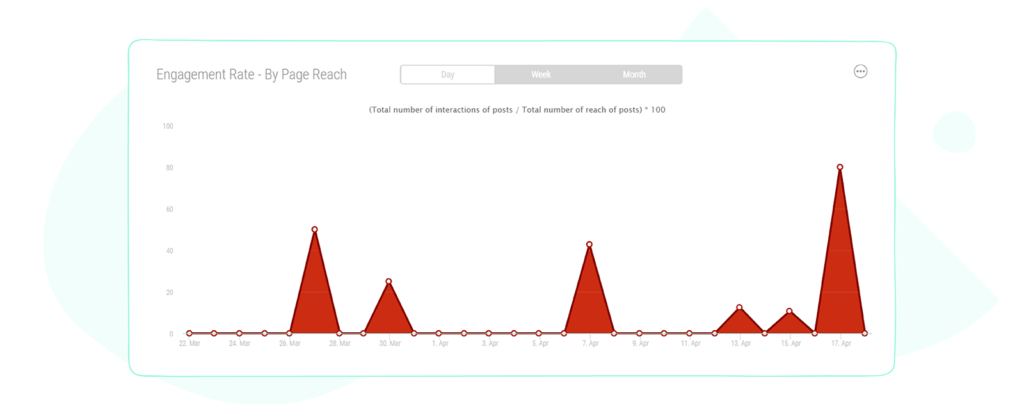
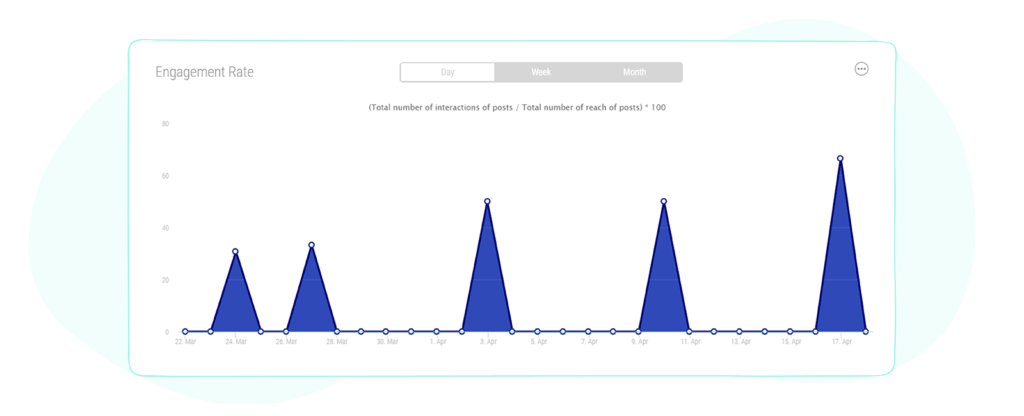
This helps us spot the days when we got the highest engagement, and we can find out what posts we published to achieve those results.
Scrolling down to the end of the report lets us see the individual posts, so you won’t need to leave Sociality.io to see each post that can help you find your unicorn content.
Using our dummy example, it would be these ones.
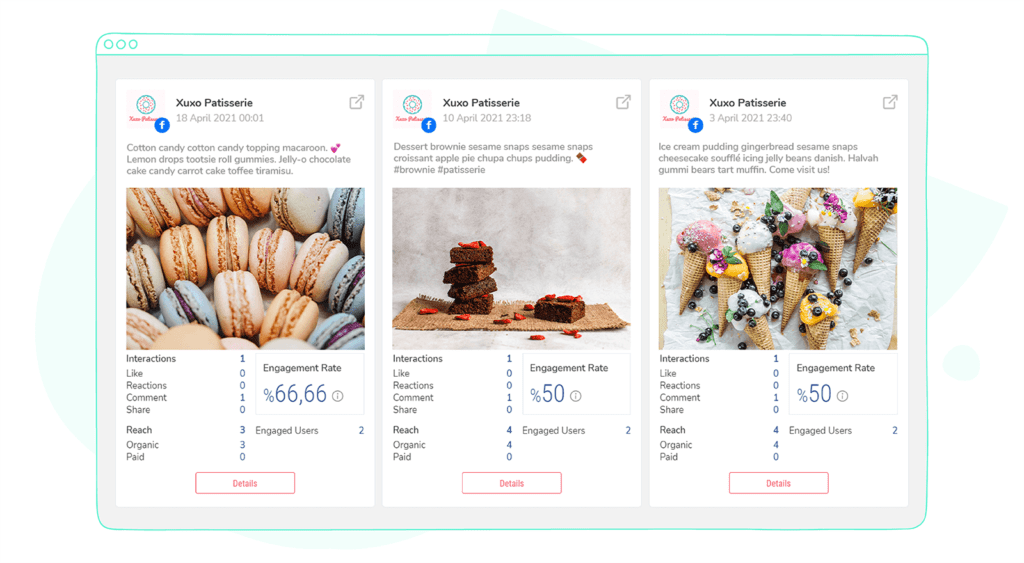
The posts you’ll see first are your top performers, the ones that are making up the majority of your engagement. So they’re also the ones with elements you should be looking to replicate across your whole strategy.
Anyway, we’re ready to move on to competitor analysis.
Strategy 2: Finding unicorn content through competitor analysis
Now, we’re going to try to discover our unicorn content by looking at competitors’ top-performing posts.
First, we’ll have to identify our competitors, preferably a couple, and set time frames, filters, etc, like we did when looking at our own posts.
Here’s a guide on finding social media competitors if you’re new to this.
We’ll be able to see the engagement rate, which is important for letting us know if the competitors we’ve chosen are performing well in the first place. And we can also see what their best day looks like and keep an eye out for the content they published when they performed particularly well.
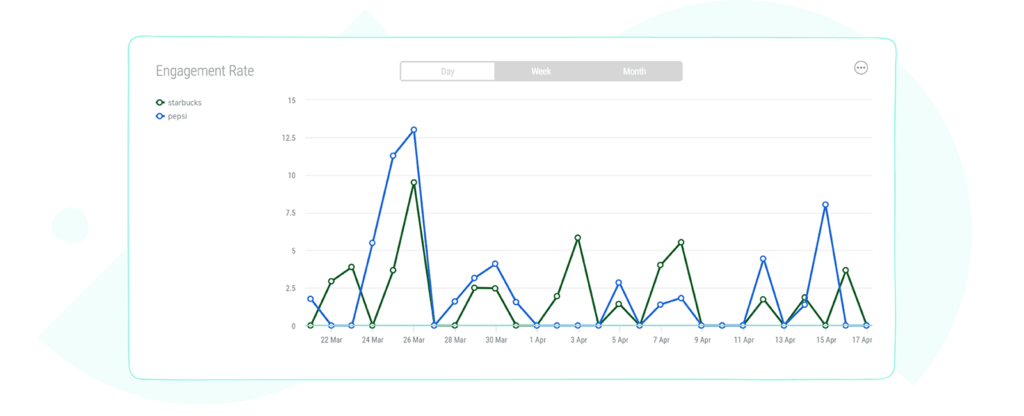
The final section of the report is where we’ll be able to see individual posts, just like last time.
Let’s sort results according to highest-to-lowest engagement, so the first results we see will be those that give us an idea of what unicorn content for our target audience looks like.
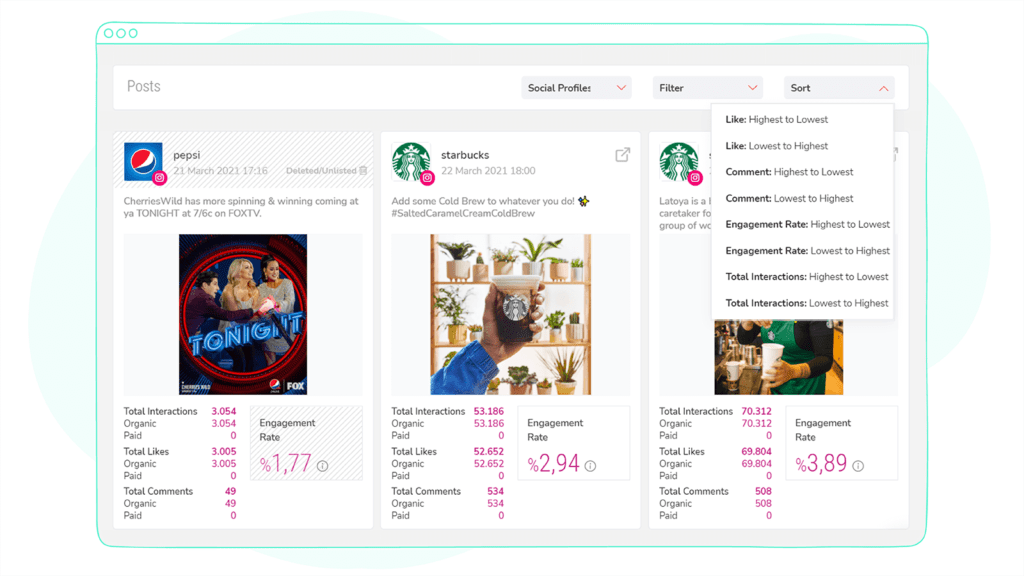
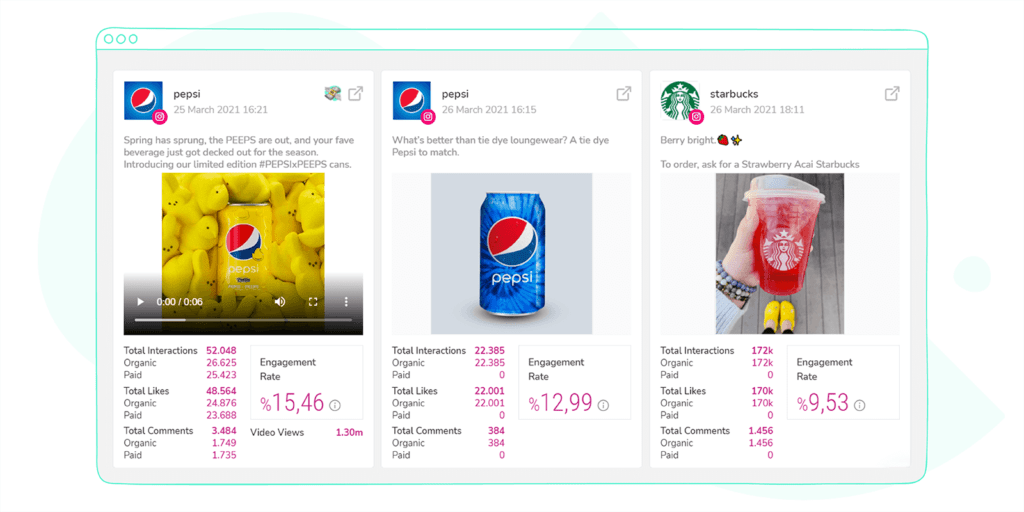
Anyway, there’s a handy icon above that takes us to the post’s URL.

Here are the rest of our competitors’ top-performing posts.
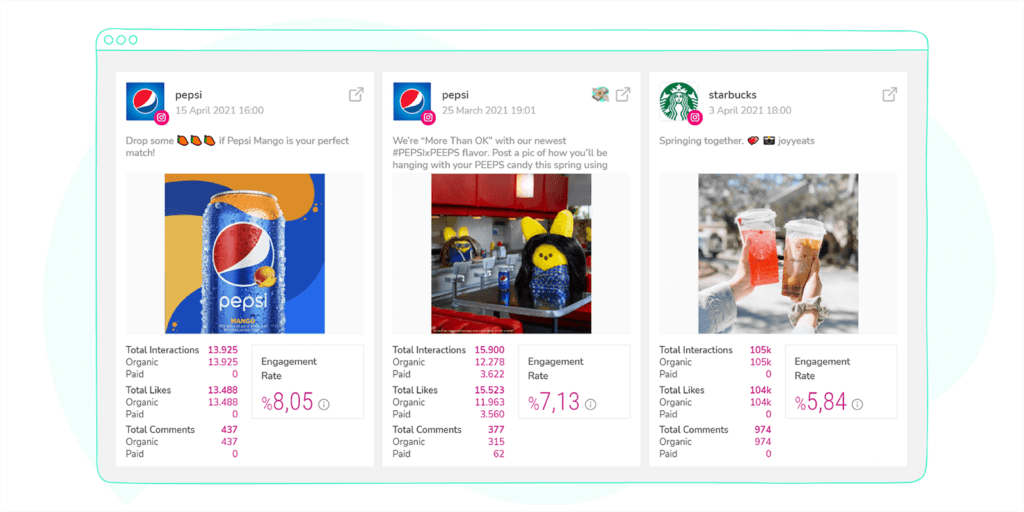
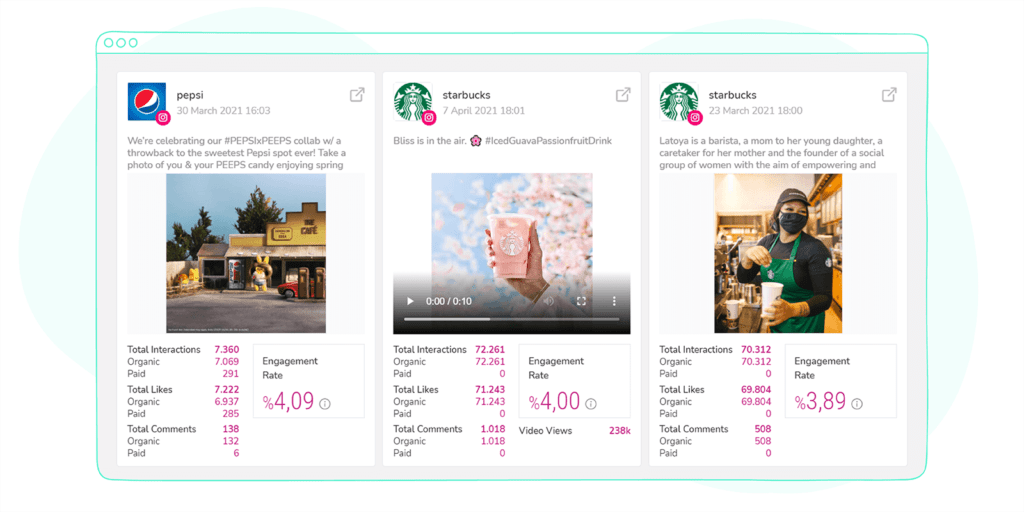
But we can see, for the competitors we’ve chosen, images with colorful drinks and playful, upbeat captions seem to be doing especially well. If your brand is in the food and beverages space, take note.
Okay, onto the final strategy.
Strategy 3: Finding unicorn content through social listening
Unicorn content performs so well because it just seamlessly melds into the conversation. It’s exactly what users want to engage with. It speaks to them in some way, because it’s content that reflects the things they are already talking about — the things they care about.
This is why social listening is a key part of finding unicorn content. You can use it to find insights to create content that’s genuinely relevant to users.
You can weigh in on industry media trends, make your own comment about whether a
Since we draw this content from topics generated by our target audience, why not look beyond social media for much wider perspectives?
The listening module enables us to do that by drawing from:
- Social media
- Blogs
- News
- The wider web
Using all these sources, we can be the first brand to create social media content that touches on certain user sentiments, tapping into an untouched source of users.
A study by Wharton Faculty Research shows that beating your competitors to posting content that focuses on a particular sentiment can result in a 34% engagement rate increase.
And the process filters are great for showing us how users feel about certain topics or keywords, whether their comments are positive, neutral, or negative.
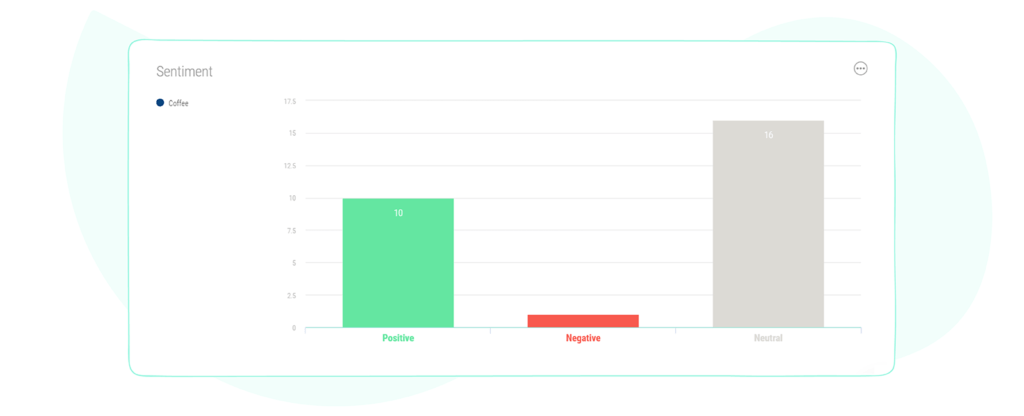
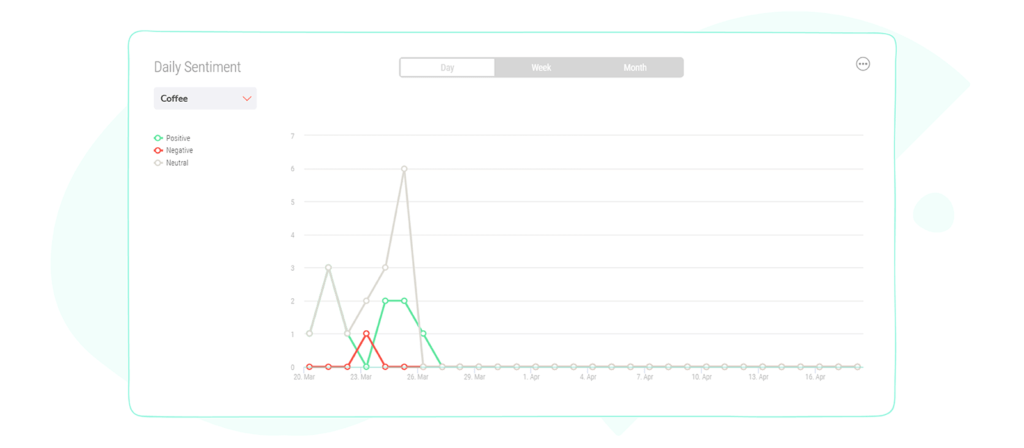
And check out how the word cloud tells you what your audience are saying based on a particular topic. So, if you’re a coffee-like in this example, you can discover users’ favorite brews, what they’re raving about, and their complaints.
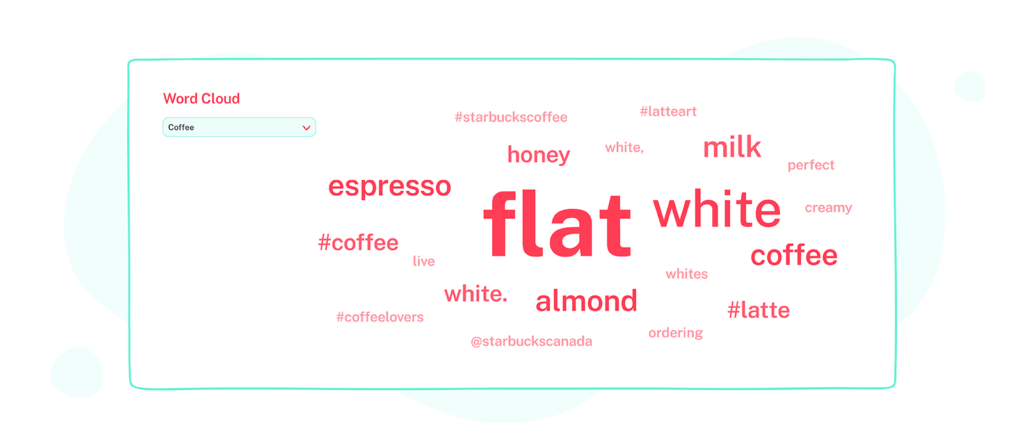
Some of the keywords we could focus on include:
Brand topics
These are topics that matter to you as a brand. They reveal what your target audience is saying about you.
Product and service topics
These are topics that show you mention the products you sell or the services you provide.
You can use insights from this type of listening to highlight the benefits of your offerings. If your audience has a pain point, create content showing how your product or service addresses it. If they have something they particularly love, show that you have it.
Competitor topics
Competitor topics are those that relate to your competitors. If there’s a conversation going on about them, surely you’ve got to listen in. You need to hear what people are saying.
Is your shared audience pleased with your competitor or agitated? What’s getting them excited or riled up?
There might be a chance to grab some of their share of voice. You just need to structure your content to show a strong alternative when your competitor’s audience is ready to consider one.
Industry-wide topics
It’s great to know what’s going on in the industry as a whole. You can discover what your audience really cares about. And there’s no better way to do that than to discover what they’re already talking about, including the stories that are making the news or getting featured in blogs.
In closing…
That’s it. Those are the three methods you can find use to find your unicorn content:
- Going through your own reports to identify patterns within your top-performing content
- Performing competitor analysis to discover which of your competitors’ posts are resonating with your target audience, and identifying what you can learn from them
- Doing social media listening to peer into your target audience’s thoughts and feelings to see how you can adapt your social media content to be in sync with them
You have everything you need now, so it’s time to find some unicorns and watch your results sky-rocket.




